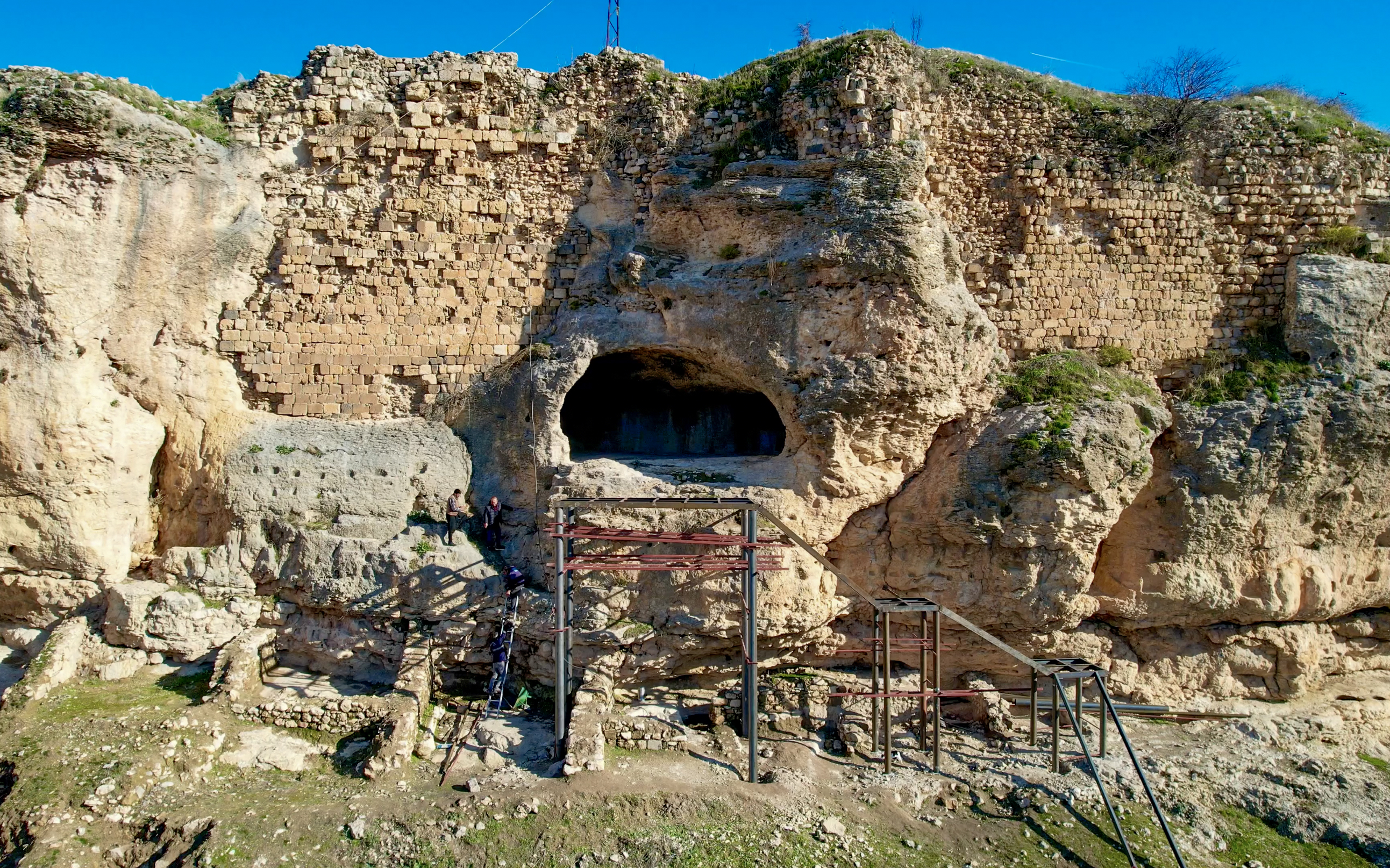Diyarbakir’s ancient rock church prepares to welcome visitors

Diyarbakir’s Egil district rock church is now open for local and foreign tourists, thanks to recent renovations led by the district governor’s office and the municipality
A nearly 1,900-year-old rock church located in Diyarbakir’s Egil district is undergoing renovations and has been opened for tourism.
Egil, a district in Diyarbakir, Türkiye, is significant in cultural and religious tourism. The area is believed to be the final resting place of Prophets Dhu al-Kifl and al-Yasa, mentioned in the Quran, and attracts pilgrims and visitors. The district also has a rich historical tapestry, evident in its imposing Egil Castle and the scenic Kralkizi Dam Lake. The area is further distinguished by its ancient fortification cisterns and historical buildings, believed to date back to the Assyrian period.

Excavations of the historical castle started two years ago, spearheaded by the district governorship and the municipality and with the permission of the Ministry of Culture and Tourism. The project is being led by professor Vecihi Ozkaya, a faculty member of the Department of Archaeology at Dicle University.

Progress in restoring the ancient castle has reached a significant milestone. Two out of the four original tunnels have been fully repaired and are now accessible to tourists. This marks a successful 80% completion of the restoration project, bringing the castle closer to its full glory.
A nearly two-millennia-old church adorned with numerous crosses on its walls has undergone renovations to enhance accessibility for both local and international visitors. The documentation, area management, and cleaning have been completed. The existing road to the church was renovated, and a new staircase was built to allow tourists easy access.

Professor Vecihi Ozkaya points out that this unique church originated from the merging of two separate rock tombs. Notably, the structure reflects distinct masonry styles from different historical periods. Additionally, the presence of crosses adorning the walls serves as a testament to the longstanding Christian presence in the region, both historically and in the present day.
Source: Newsroom



